Saturday, June 5, 2021
Titan Missile Museum and Chiricahua National Monument
Last night's hotel was just a mile from the last remaining Titan II intercontinental ballistic missile silo. All 54 of the Titan II missile launch sites were decommissioned in the 1980s, near the close of the Cold War. To prove to the Soviets that the silos were deactivated, the missiles were removed and the silos were then blown apart using 2,800 pounds of explosives. Once Soviet satellites had flown over and verified their destruction, the silo remains were buried.
Only one of the Titan II missile sites was allowed to escape destruction and now lives on as the Titan Missile Museum, where I'd booked us tickets for a guided underground tour. The missile inside this silo has no warhead or fuel, and the silo doors are permanently blocked from opening more than halfway.
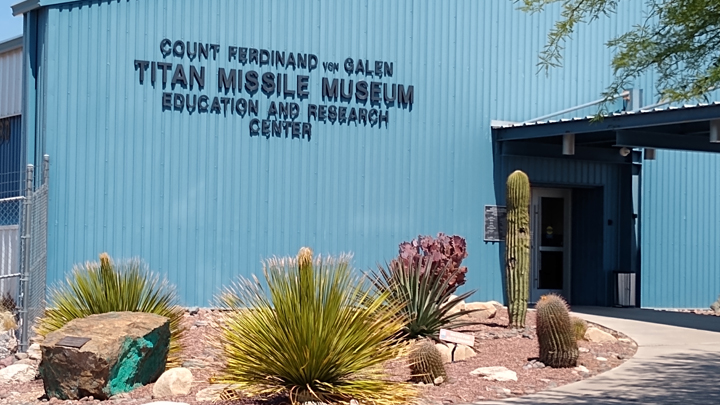
Home of the last intact Titan II missile silo
The Titan II is the largest ballistic missile developed by the United States. It can carry a warhead of nine megatons (the equivalent of 9 million tons of TNT) and deliver it anywhere within 5,500 miles in less than half an hour. These non-guided missiles took only 58 seconds to launch, and once on their way, they could not be rerouted or recalled. The ICBMs were a critical part of the "mutually assured destruction" defense theory popular during the Cold War.
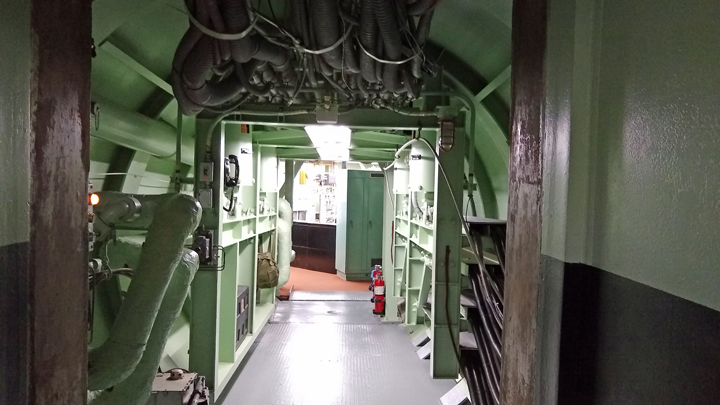
Underground cableway between the launch control center and the Titan II missile silo
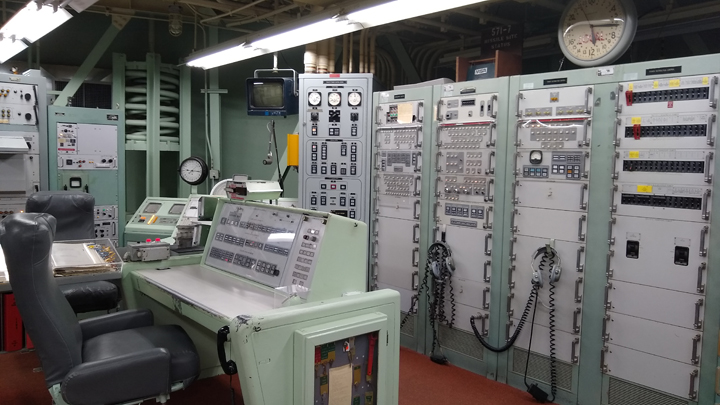
Launch control center, 35 feet underground, behind 12-inch-thick, 6000-pound steel doors
In addition to their destructive power, the Titan II missiles also launched the Gemini astronauts into orbit, sent the Viking probes to Mars, and blasted the Voyager spacecraft into the outer solar system. Also, the rocket Zefram Cochrane used in “Star Trek: First Contact” was modified from a Titan II nuclear missile, and several scenes from the movie were shot at this site! (I can't believe they didn't mention the Star Trek stuff on the tour.)
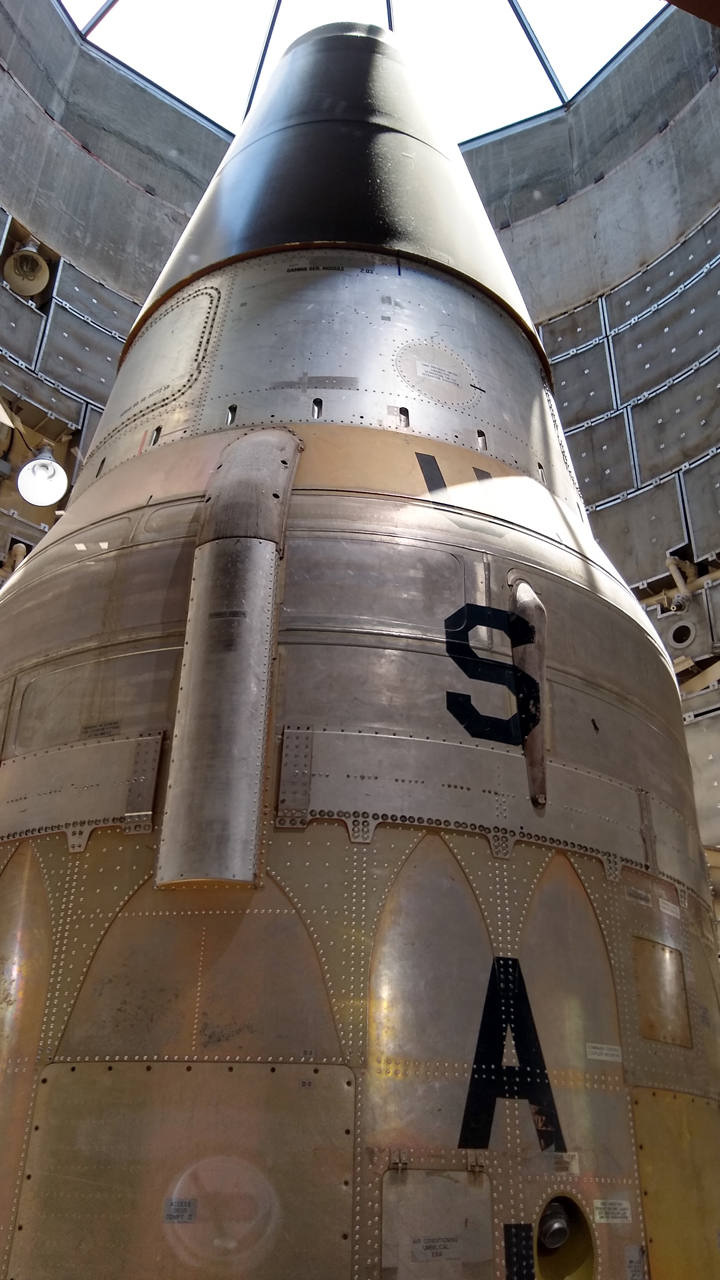
Titan II ICBM
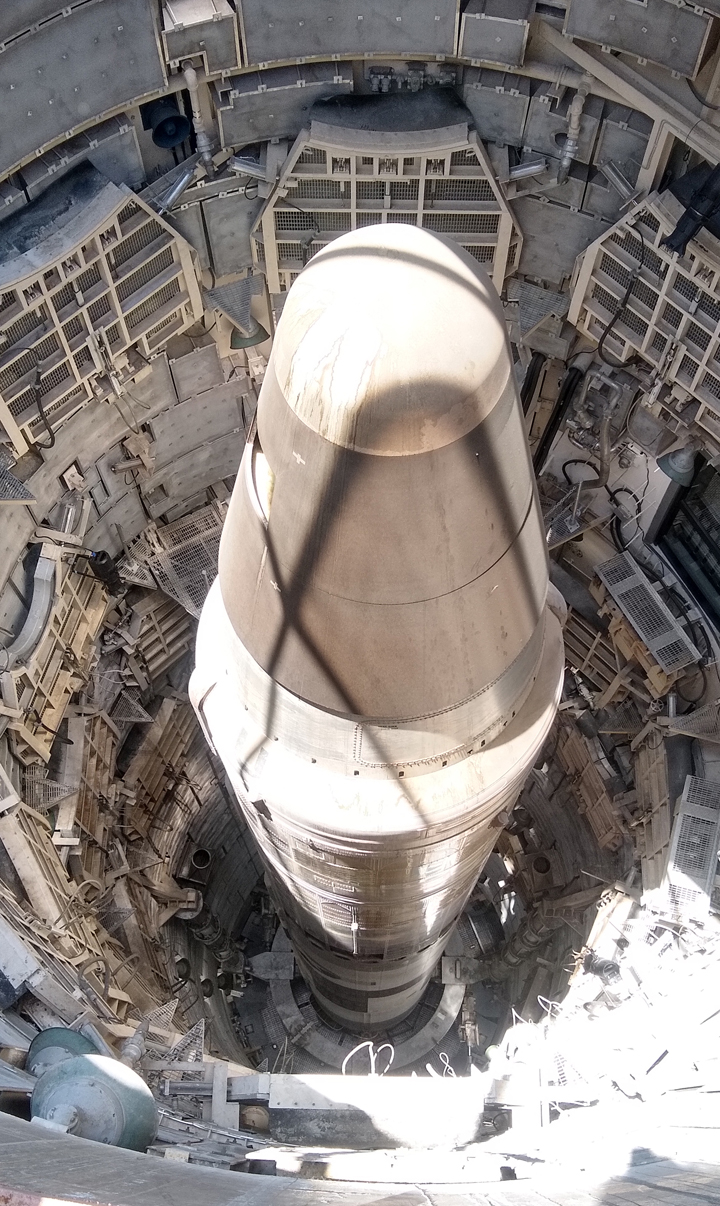
103 feet tall and 10 feet in diameter
From the Missile Museum, we headed east for our next adventure, and upon leaving I-10 an hour later, we came across Rattlesnake Ranch, outside Dragoon, Arizona. The exhibit of sculptures is privately owned, but visitors are welcome.
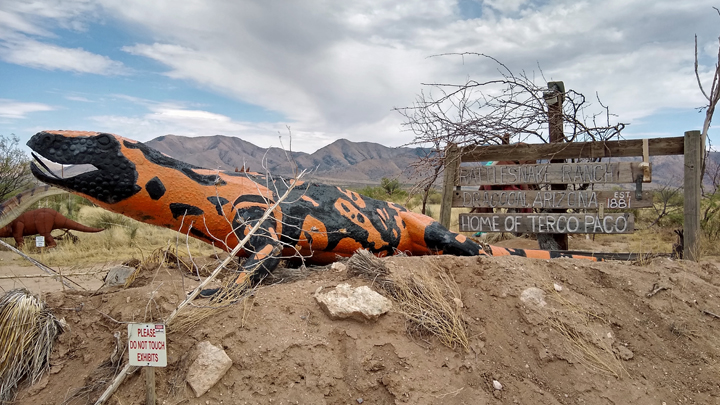
Rattlesnake Ranch
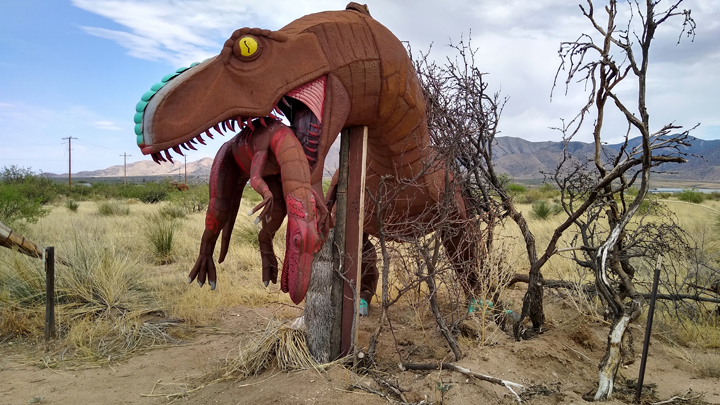
Jurassic Park
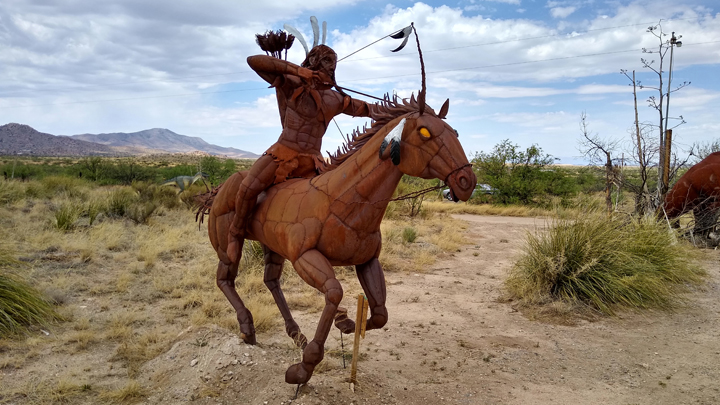
Clash of the epochs
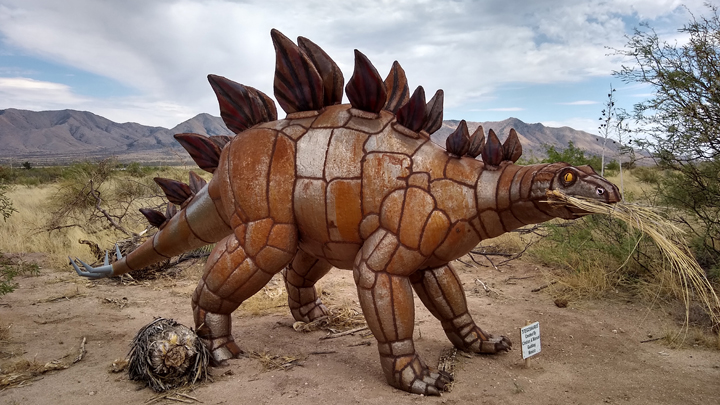
Back to Jurassic
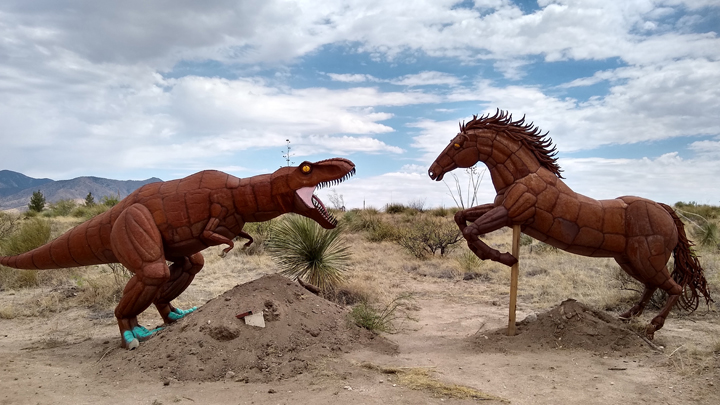
My money is on the dinosaur
Chiricahua National Monument is a less visited part of the National Park System in the southeast corner of Arizona. It's known as a “Wonderland of Rocks” for its cool geologic formations. The park ranges from 5,124 feet at its entrance to 7,310 feet at the top of Sugarloaf Mountain, the high elevation making the temperature perfect this afternoon for a top-down drive in the convertible.
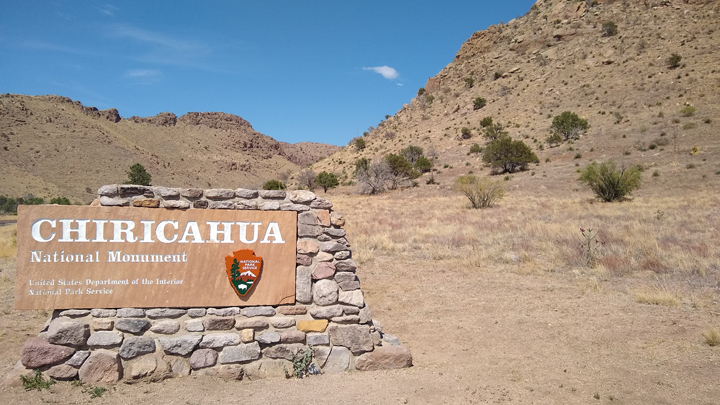
A lesser-known national treasure
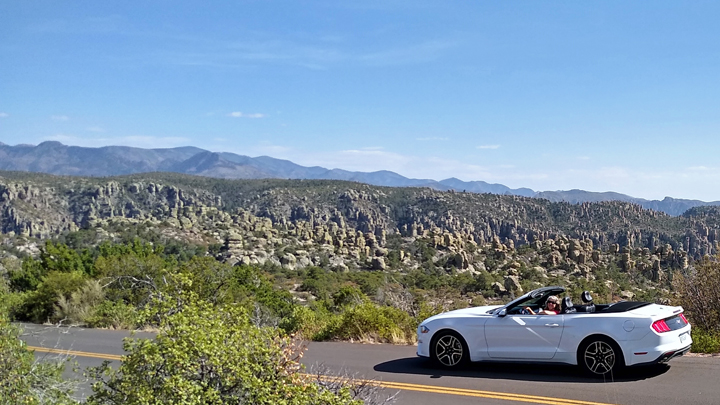
Driving topless!
The mile-long Echo Canyon Grotto Trail is a good place to walk among the park's hoodoos and balanced rocks. It's hard to believe we practically had this whole park to ourselves!
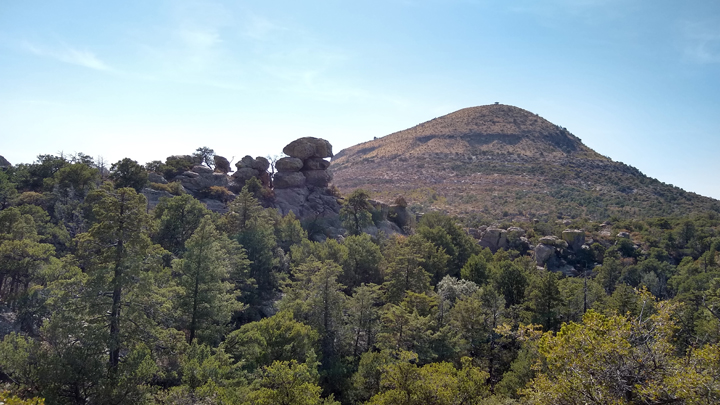
Sugarloaf Mountain from the Echo Canyon Grotto Trail
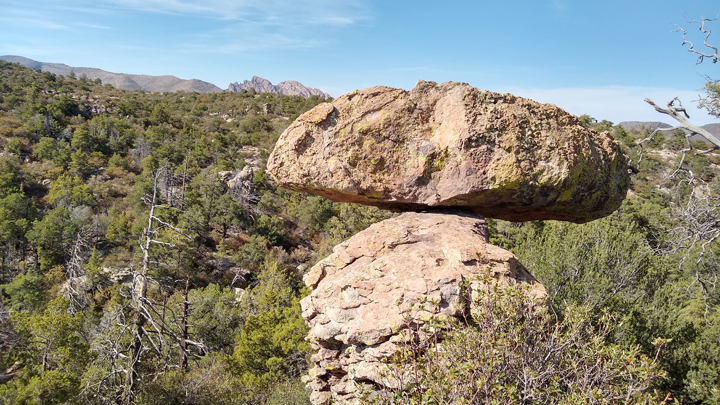
Balanced rock
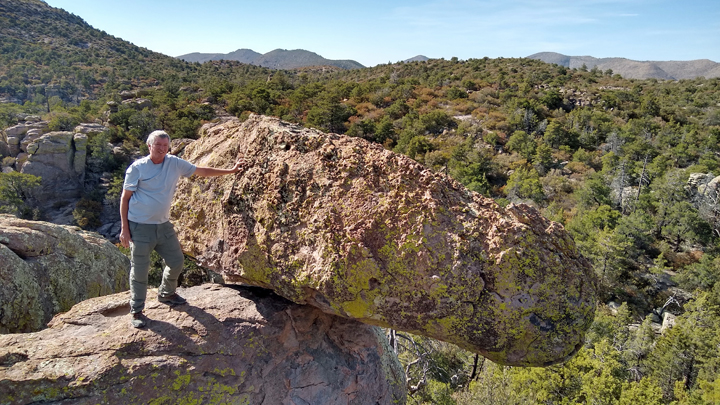
Don't lean on that!
Bonita Canyon Drive winds its way eight miles through Chiracahua before dead-ending at Massai Point in a spectacular 360-degree vista. The Massai Point Nature Trail offers stunning views of the surrounding pinnacle-filled valleys and mountain ranges.
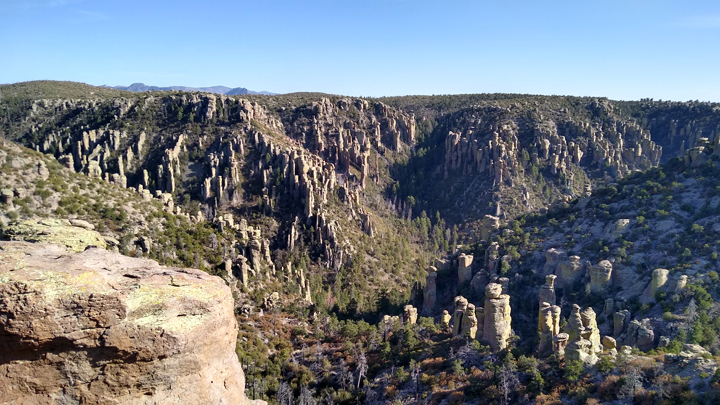
Massai Point Vista
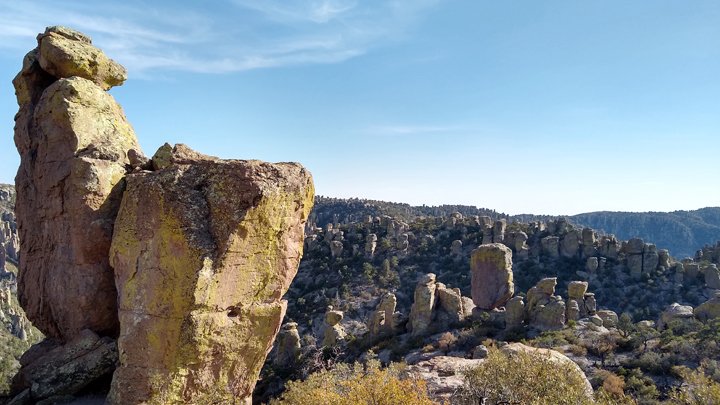
Along the Massai Point Nature Trail
Most of the pullouts along Bonita Canyon Drive are more convenient to stop at on the way out, so we slowly backtracked out of the park, halting often to admire the fanciful formations.
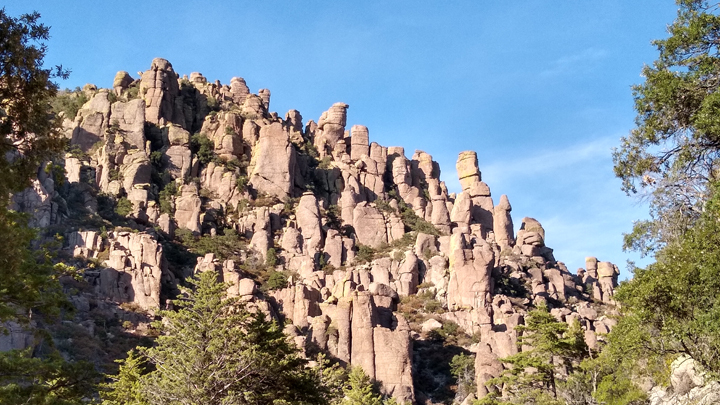
Park of pinnacles
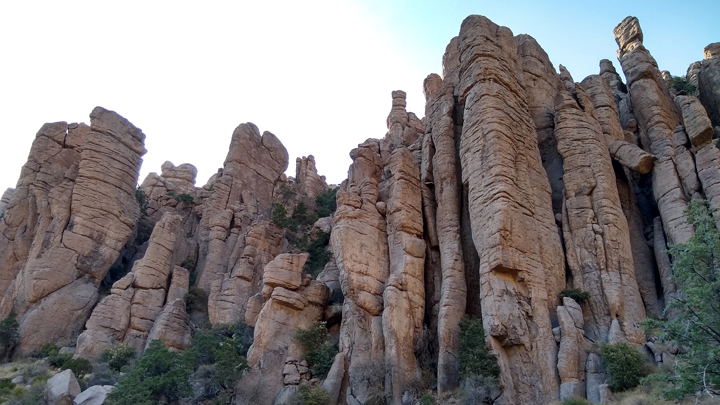
Organ Pipe formation
Lodging: Days Inn in Willcox, clean and inviting, with a king-sized bed. We arrived early enough that we could have attended the nearby tractor pull that was the talk of the town, but we were out of energy.
After resting in our room, we walked across the street to the Double S Steakhouse for dinner. We had chicken and brisket instead of steak, with great big lemonades served in quart jars. It was good and quite reasonable.
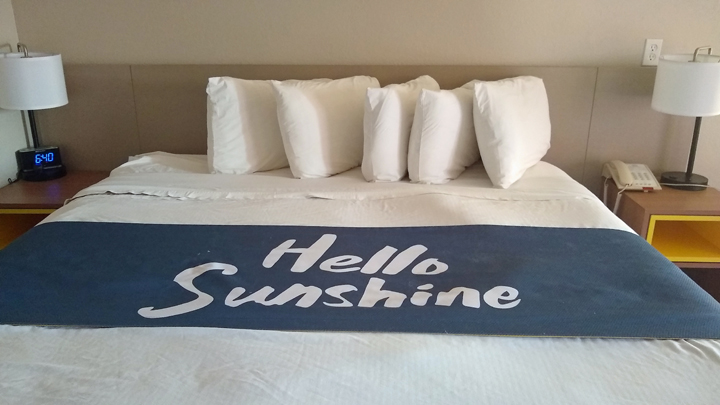
Hello back at ya!
|



















